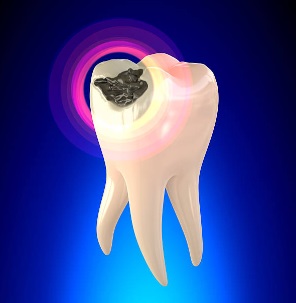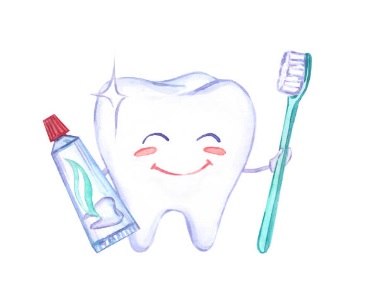
Show the clinics offering Fillings
What are tooth fillings?
Tooth fillings are materials used by dentists to fill cavities (gaps or holes) in tooth enamel or teeth (dentin). Fillings are used by dentists when a tooth is decayed, has a root canal, is decayed, or is damaged. Their main purpose is to repair the tooth surface and restore its function, and to protect the tooth from bacteria, caries, or physical damage.
 Cavity filling is an alternative to crowns or veneers used when the damage is too great to be filled with fillings or onlays. Fillings are often relatively quick and easy procedures used to fill small cavities in teeth. Dental crowns and veneers are more durable, but the procedure tends to take longer and is a more expensive option.If there is a problem with the pulp, root canal treatment may be required. This branch of dentistry is known as ‘endodontics’. This is a dental specialty that deals with the examination and treatment of the dental pulp. This pulp consists of nerves, blood vessels, and lymph vessels. Cavities can cause inflammation and infection, but there are other reasons as well. Irreversible pulpitis occurs when the inflammation and/or pain is so severe that the pulp cannot be saved. Then need root canal treatment is needed.
Cavity filling is an alternative to crowns or veneers used when the damage is too great to be filled with fillings or onlays. Fillings are often relatively quick and easy procedures used to fill small cavities in teeth. Dental crowns and veneers are more durable, but the procedure tends to take longer and is a more expensive option.If there is a problem with the pulp, root canal treatment may be required. This branch of dentistry is known as ‘endodontics’. This is a dental specialty that deals with the examination and treatment of the dental pulp. This pulp consists of nerves, blood vessels, and lymph vessels. Cavities can cause inflammation and infection, but there are other reasons as well. Irreversible pulpitis occurs when the inflammation and/or pain is so severe that the pulp cannot be saved. Then need root canal treatment is needed.
Tooth fillings can be made from a variety of materials. The most popular are natural tooth-colored composite resins, porcelain, amalgams (composed of silver, copper, mercury and other trace elements) and, until recently, gold, which was the most popular. Because amalgam and gold contain mercury, scientists now view them negatively as potentially dangerous to human health. Fillings are also called onlays/inlays depending on the size of the restoration.
A filling is required if:
- Teeth and enamel eroded and worn away
- The tooth or enamel is damaged, easily chipped, and unable to hold its shape to function properly
- Your Temporary Stuffing Has Dropped
- your teeth are decayed
- Holes in the enamel due to tooth decay
- Underwent root canal treatment to preserve the natural tooth.
How do I know if I need filling?
Even if you have any of the above symptoms, you may not realize you need a filling until you have a dental check-up. A small mirror is used to observe the inside of the mouth to check for any abnormalities on the surface of the teeth, and X-rays are taken if necessary. If it is an NHS dentist, a treatment plan will be drawn up. Alternatively, if the work is done in person, the dentist can complete the filling immediately.
Treatment for dental filling
You may be wondering what procedures are involved in filling a tooth. It’s a very simple dental procedure.
- Dental checkup
An examination by a dentist is required before starting treatment. During the examination, any problems can be discussed with the dentist, who will take the necessary steps.
After examining the tooth, the dentist selects the best type of filling. If root canal treatment is required, the dentist should perform this procedure first. This makes the process longer and he may need a visit or two.
- Remove tooth decay

If a tooth is diagnosed with decay, the first step is to drill out the decayed portion of the tooth. This may mean the use of conventional rotary dental drills or newer systems such as laser ablation systems and air ablation devices as appropriate. Next, remove bacteria and sediment from the cavity. Finally, clean, wash and dry the affected tooth area.
- How do local anesthetics work?
If all is well, the dentist will inject a local anesthetic into the affected area to numb the gums. This is painless. General anesthesia is usually not used because local anesthesia is much easier and faster. Numbness caused by local anesthesia may last for several hours after the procedure. After local anesthesia, patients may have problems with correct pronunciation (proper speech). Therefore, if you plan to do anything that requires language skills after treatment, you may want to postpone it. Less commonly, intraligamental anesthesia only numbs specific teeth, not the gums or surrounding areas. However, not all dentists offer this procedure.
- Tooth filling, shaping and polishing
In so-called direct fillings (direct on-site fillings), a dental filling is prepared and inserted into the cavity by a doctor to fill gaps and restore the tooth’s original shape and function. It cures with UV light so that the filling bonds quickly and securely to the natural tooth structure. In some cases, a liner made of glass ionomer, composite resin, or other material may be required to secure the nerve. If the material is tooth colored, it must be built up in layers and each layer cured with a special laser beam. Using laser light on these multilayers can be time consuming. Then check to see if the new filling somehow alters or impairs the natural bite pattern. If necessary, the filling will be precisely cut and re-polished by the dentist.
Types of tooth fillings
There are several options on the market today to choose from. From the most established material to the newest, the list goes like this:
- Gold – flexible and durable. It is usually composed of gold (usually 75%), copper and other trace metals, yet retains its golden appearance. They can last up to 20 years, but are highly visible in the mouth, require multiple visits, and are the most expensive
- Porcelain – They are called inlays or onlays because they are used to fill large cavities or gaps and must be prepared in the laboratory before being glued to the tooth. Porcelain fillings are resistant to staining when filled with coffee or tea and can match the natural color of your teeth. Porcelain restorations typically cover most of the tooth and cost about as much as gold fillings
- Silver Amalgam – A new and inexpensive solution. Amalgam fillings are a composition of mercury, silver, tin, zinc and copper. They look like silver and are durable, but have fallen out of favor recently due to their mercury content, which is known to be harmful to human health and easily breaks down at high temperatures.
- Composite resin – has the advantage of being very natural looking – it naturally adapts to the color of your teeth. Modern resins contain quartz and glass to provide durability and protection for medium-sized cavities. They are the most commonly used fillings today, but they are easy to stain, chip 2, and only last up to 10 years
- Composite resin – Materials such as acrylic containing glass particles most commonly used for under-gums fillings and fillings in children’s teeth. However, acrylic is weaker than composite resin dental fillings and is more prone to abrasion and cracking. They cost similar to composite resin fillings and usually last 5 years or more.
How long should the fillings last?
 Every time you drink, eat, chew, bite your nails, or talk, it can wear down your filling if it is in the affected area. Depending on your health, or other dental problems, your tooth filling will usually last approximately:
Every time you drink, eat, chew, bite your nails, or talk, it can wear down your filling if it is in the affected area. Depending on your health, or other dental problems, your tooth filling will usually last approximately:
- Temporary fillings – about 2-3 months, but remember to replace them as soon as possible as they can cause dental complications if they last longer.
- Glass filling – Usually lasts 1-5 years with a few exceptions.
- Composite resin – lasts up to 5-10 years
- Porcelain – costs as much as gold but only lasts 15 years
- Silver amalgam – lasts 10-15 years before needing replacement
- Cast Gold – Lasts the longest between 15 and 30 years.



